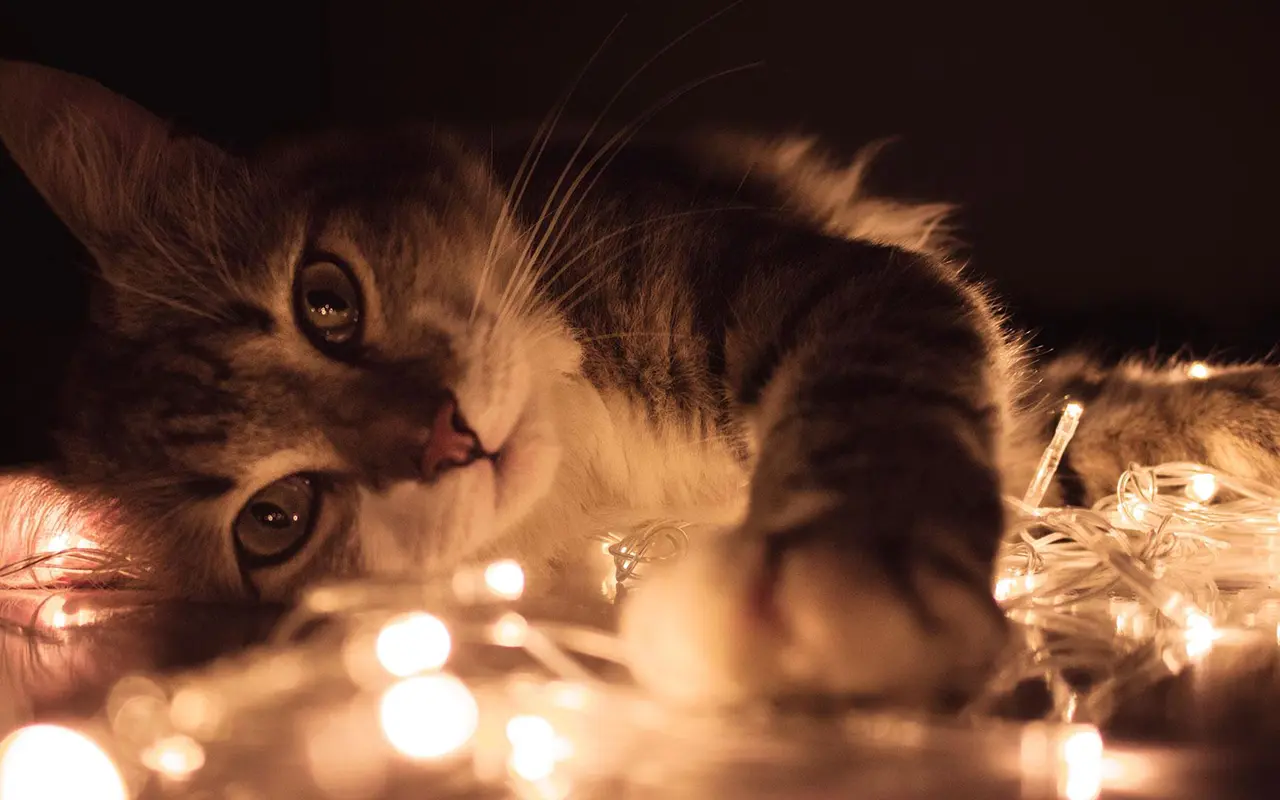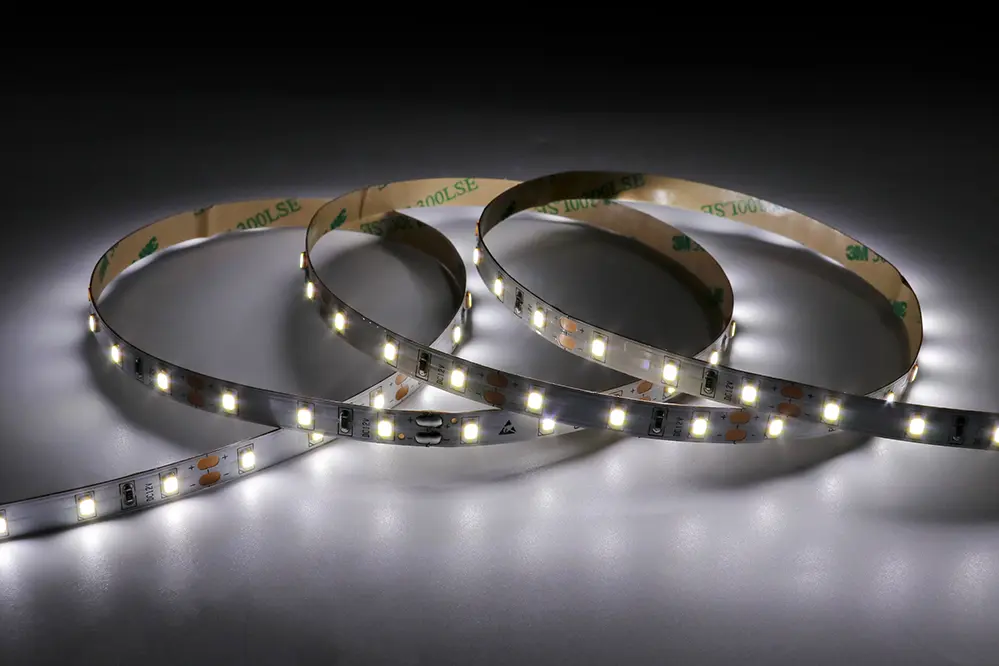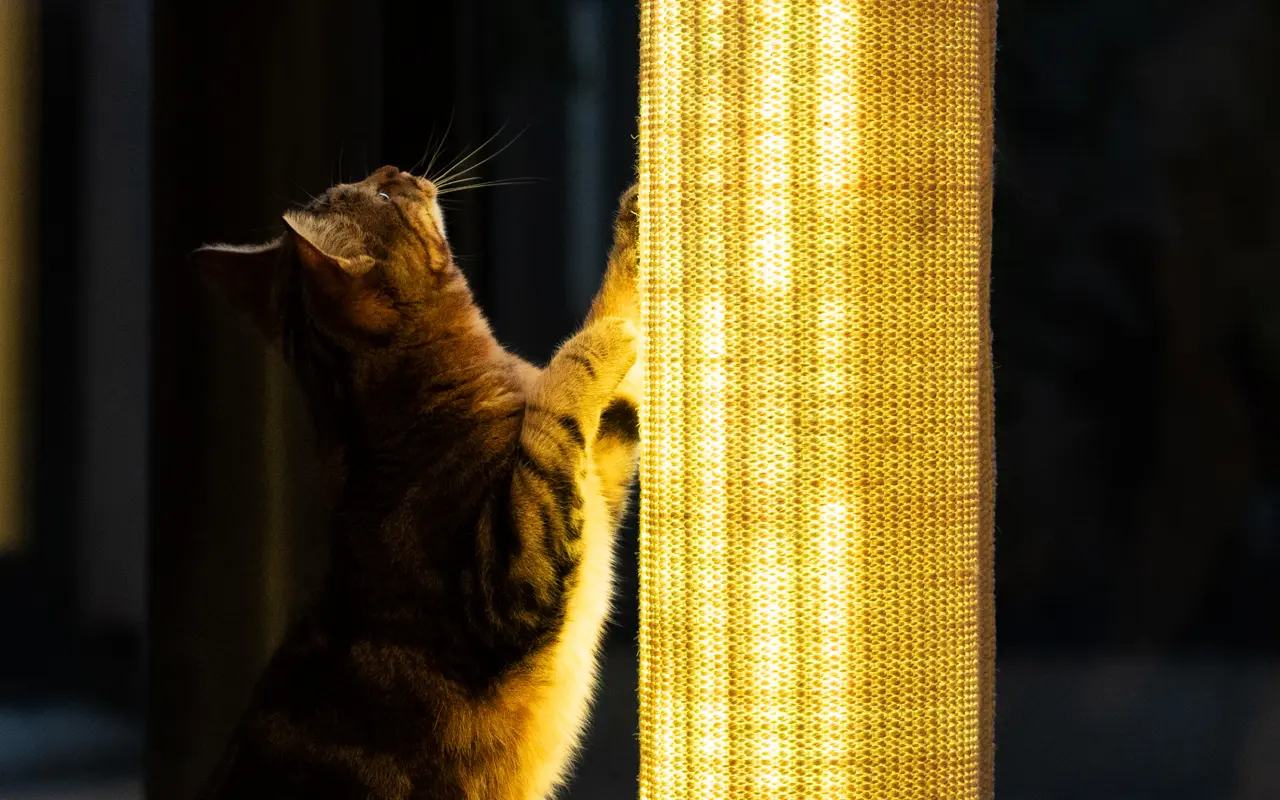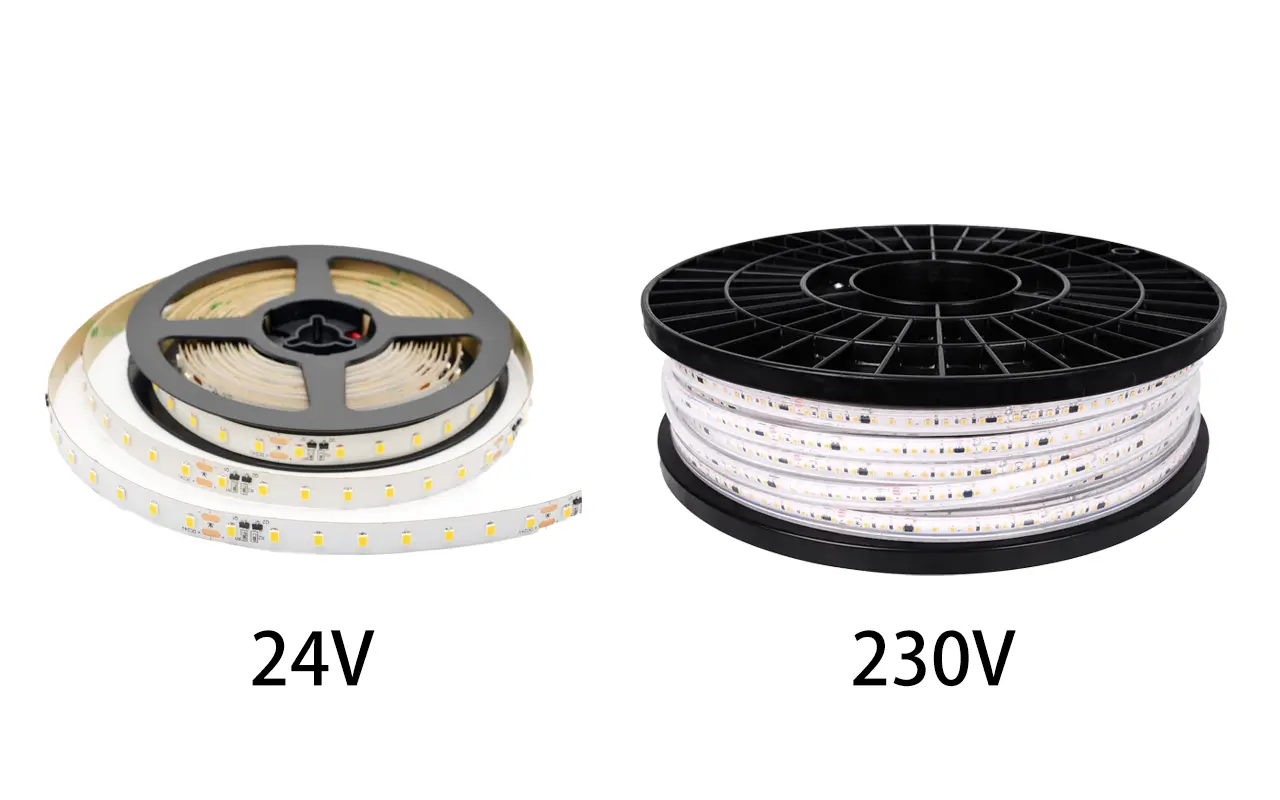Navigating the world of pet safety in our technologically advanced homes can be daunting, especially when it involves our beloved feline companions and their interaction with modern lighting solutions. Rest assured, you’ve come to the right place for comprehensive insights and practical advice on LED strip lighting and its impact on cats.
LED strip lights, revered for their energy efficiency and versatility, are generally safe for cats. However, understanding their light intensity, color spectrum, and proper installation is crucial to ensure these lighting solutions do not adversely affect your cat’s health and well-being.
Embark on a journey with us as we delve deeper into the nuances of LED lighting in relation to cats. Discover tailored strategies and expert tips to harmonize your home lighting with the needs of your furry friend, ensuring their comfort and safety in a luminous environment.
Insights into LED Lighting: Ensuring Feline Safety
Breaking Down LED Technology: What Cat Owners Need to Know
LED lighting has become ubiquitous in our lives, illuminating everything from our homes to our offices and even our streets. But what does this mean for the non-human eyes under our care, particularly those of our beloved feline companions?
Understanding LED technology is essential for any cat owner. At its core, an LED, or light-emitting diode, is a semiconductor device that emits light when an electrical current passes through it. Unlike traditional incandescent bulbs, LEDs don’t rely on heated filaments to produce light, which means they generate significantly less heat—a crucial factor in ensuring pet safety.
Moreover, LEDs are known for their efficiency and longevity, but it’s their light intensity and color spectrum that we need to scrutinize from a feline perspective. Cats have a different visual system compared to humans. Their eyes are designed to detect the slightest movements in low light conditions, making them incredibly sensitive to changes in lighting intensity and potentially more susceptible to discomfort from artificial light sources.
By understanding these principles, cat owners can make informed decisions about the lighting in their homes. It’s not just about providing light; it’s about creating an environment that respects the natural instincts and needs of your cat.
Selecting the Right LED Features for Your Feline Friend
When it comes to choosing LED lighting for a space shared with cats, several factors come into play. The color temperature of an LED light, measured in Kelvin (K), can range from warm yellows to cool blues. Studies suggest that warmer, lower-Kelvin lights are more comfortable for cats, mimicking the colors of dawn and dusk when these crepuscular creatures are most active.
Another essential feature to consider is the ability to dim your LED lights. Sudden changes in lighting can be startling or uncomfortable for cats, especially if they’re sensitive or have underlying health issues. Dimmable LEDs allow you to adjust the brightness to suit your cat’s current activity or time of day, providing a more natural and less intrusive lighting environment.
Additionally, the placement of LED lights should be strategic. Avoid placing intense, direct lights in areas where your cat frequents or sleeps. Instead, aim for ambient lighting that illuminates spaces gently and uniformly, reducing harsh shadows or bright spots that could disturb your pet.
In summary, while LED lights offer numerous advantages in terms of energy efficiency and lifespan, their implementation in a cat-inclusive household requires thoughtful consideration of these animals’ unique sensory experiences. By choosing LEDs with appropriate color temperatures and dimming capabilities, cat owners can significantly enhance the comfort and well-being of their feline friends, ensuring that their lighting choices support a harmonious living environment for all inhabitants.
Feline Vision and LED Interaction: A Critical Analysis
Understanding Your Cat’s Eyesight: Adapting Your Home Lighting
Cats possess a vision that is highly adapted to their role as nocturnal predators, allowing them to see in light levels six times lower than what a human needs. This incredible sensitivity, however, means that our domestic lighting can have unintended effects on their comfort and stress levels. LED lights, while beneficial for energy conservation and longevity, emit a spectrum of light and intensity that can be quite different from natural sunlight, to which cats’ eyes are optimally attuned.
To make our homes more accommodating, it’s vital to understand that the feline eye is particularly responsive to movement and can detect even minor changes in lighting. This sensitivity can make certain LED settings, especially those that flicker or change abruptly, potentially unsettling or even harmful over time. Adapting home lighting to cater to these unique feline sensitivities involves selecting LEDs with a steady output and avoiding those with rapid flicker rates that can trigger a stress response in sensitive cats.
Furthermore, considering the color temperature and brightness is crucial. Cats do not perceive colors in the same way humans do, but they can detect changes in light intensity and may prefer environments that more closely mimic the dynamic lighting conditions of the outdoors. Therefore, choosing LEDs that offer a warmer, softer light, similar to dawn or dusk, can create a more natural and comfortable setting for your feline companion.
Optimizing LED Lighting for Cat Comfort and Health
Creating a cat-friendly lighting environment doesn’t stop at selecting the right LED bulbs. Placement and control of lighting are equally important to ensure your cat’s comfort and well-being. To optimize LED lighting for your cat, consider areas where your cat spends the most time and adjust the lighting accordingly. For instance, avoid placing bright LEDs directly above your cat’s favorite resting spots or along pathways they frequently use.
Dimmable LEDs can be particularly beneficial, allowing you to reduce brightness during your cat’s active twilight hours, thus mimicking the natural decrease in light they would experience outdoors. Additionally, incorporating timers or smart home systems to gradually adjust lighting can help maintain a consistent environment that respects your cat’s natural circadian rhythms.
By taking these steps to adjust both the settings on your LED lights and their placement within your home, you can help minimize any potential discomfort or stress for your cat. The goal is to create a lighting environment that supports their health and happiness, enabling them to feel secure and relaxed in their indoor territory. With thoughtful consideration and adjustments, you can harness the benefits of LED lighting while ensuring it complements the natural behaviors and preferences of your feline friend.
Practical Steps for Cat-Safe LED Usage
Installation and Configuration Tips for Pet Owners
Ensuring the safety and comfort of your feline friends in an environment illuminated by LED lighting starts with thoughtful installation and configuration. Recognizing that every cat has its unique habits and preferences, it’s crucial to consider how the placement and setup of LED strip lights can affect their daily life. For instance, LEDs installed in high-traffic areas should emit a soft, diffuse light to avoid startling or overwhelming your cat with intense brightness.
When configuring your LED lights, it’s advantageous to opt for adjustable and programmable options. Such features allow you to tailor the lighting to suit different times of the day, aligning with your cat’s natural activity patterns. For example, softer lighting during evening hours can help simulate dusk, providing a comfortable transition for your cat into their nocturnal activities.
Additionally, consider the height and angle of LED installations. Lights placed at your cat’s eye level or directed toward their favorite resting spots should be avoided to prevent direct glare, which can be irritating or even harmful over time. Instead, aim for indirect lighting that enhances the ambiance without creating unnecessary stress or distraction for your pet.
Monitoring and Adjusting LED Exposure
Just as we observe our cats for signs of hunger or distress, it’s equally important to monitor their reactions to changes in household lighting. After installing LED lights, watch for any alterations in your cat’s behavior or mood that may indicate discomfort with the new lighting setup. Signs to look out for include squinting, avoidance of certain areas, or changes in sleep patterns, all of which could suggest that the lighting is not optimal for your pet.
Regularly adjusting the LED exposure in your home is key to maintaining an environment that supports your cat’s health and happiness. This might mean dimming the lights during your cat’s typical rest times or altering the color temperature to reduce perceived intensity. For homes with multiple pets or particularly sensitive cats, experimenting with different settings until you find a balance that seems to suit all household members can be worthwhile.
Remember, the goal of integrating LED lighting into your home is not just to provide illumination but to enhance the living space for all occupants, including your pets. By installing LED lights thoughtfully, monitoring your cat’s response, and making necessary adjustments, you can ensure that your lighting choices contribute positively to your cat’s well-being, reinforcing the sense of safety and comfort within your home.
Ofte stillede spørgsmål
Are LED strip lights safer for cats compared to traditional bulbs?
Yes, LED strip lights are generally safer for cats because they emit less heat and reduce the risk of burns, making them a preferred choice in homes with pets.
Can the color temperature of LED lights affect my cat’s mood?
Absolutely. Cats are sensitive to their environments, and warmer color temperatures in LED lights can create a more comforting atmosphere, whereas cooler colors might not be as cozy for them.
Should I leave LED strip lights on for my cat at night?
It’s not necessary to leave LED lights on all night for your cat. Cats have excellent night vision and can see well in low-light conditions. However, a dim, warm light can provide comfort without disrupting their natural behaviors.
Do cats prefer a specific color of LED light?
While cats don’t perceive colors the same way humans do, they may be more comfortable with warmer tones (like soft yellows) that mimic natural light, as opposed to stark, bright white or blue lights.
How can I adjust my LED strip lights to be cat-friendly?
Use dimmable LEDs to adjust the brightness and consider lights with adjustable color temperatures. Also, strategically place the lighting to avoid direct exposure to your cat’s eyes.
Are flashing or blinking LED lights safe for cats?
It’s best to avoid flashing or blinking LED lights as they can be startling or uncomfortable for cats. A consistent, steady light is more feline-friendly.
Can LED strip lights help with my cat’s anxiety?
Properly used LED strip lights can contribute to a calming environment. Soft, warm lighting can help create a sense of security, potentially easing anxiety.
Is it harmful to have LED strip lights in the same room as my cat’s litter box or feeding area?
LED lights in themselves aren’t harmful, but consider using a softer, dimmer light in areas where your cat eats or uses the litter box to maintain their comfort and privacy.
How do I know if my LED lighting is affecting my cat negatively?
Observe your cat’s behavior. Signs of discomfort might include squinting, avoiding lit areas, or changes in behavior. Adjusting the lighting to see if their behavior changes can help determine the cause.
Can the longevity of LED lights benefit my cat in any way?
Yes, the durability and less frequent need for changing LED lights mean fewer disruptions to your cat’s environment, which can help them feel more secure and stable at home.
Highlighting LED Lighting Benefits While Prioritizing Safety
LED lighting is acclaimed for its myriad benefits, chief among them being energy efficiency and an extended lifespan. These attributes not only make LED lights a cost-effective choice for homeowners but also contribute to a lower environmental footprint. However, when cats are part of your household, the integration of LED lighting necessitates a careful approach to harness these benefits while ensuring the safety and comfort of your feline friends.
The efficiency of LED lighting stems from its ability to convert a higher percentage of electricity into light, not heat, which is particularly significant in homes with pets. Traditional bulbs, which generate more heat, can pose a risk of burns to curious cats drawn to the warmth. In contrast, the cooler operation of LEDs minimizes such risks, making them a safer option in environments shared with pets.
Furthermore, the longevity of LED lights is another standout feature, reducing the frequency of bulb changes. For cat owners, this means less disruption to their pet’s environment and fewer opportunities for cats to be exposed to the small, potentially ingestible parts of lighting fixtures during replacements. This aspect, coupled with the durability of LEDs, which are less prone to breakage than glass bulbs, further underscores the safety benefits they offer in households with cats.
Yet, to truly capitalize on the advantages of LED lighting while prioritizing feline safety, it is essential to consider factors such as the light’s color, temperature, and intensity. Opting for LEDs that emit a warm, soft light can create a more welcoming and stress-free atmosphere for cats, who, as creatures of habit, are sensitive to changes in their environment. Additionally, selecting LEDs with adjustable brightness allows for the creation of a lighting scheme that can be tailored to your cat’s activity patterns and preferences, ensuring they feel secure and content in their home.
In summary, while the benefits of LED lighting for energy conservation and longevity are well-established, their implementation in homes with cats should be undertaken with an eye toward safety and comfort. By choosing the right LED products and being mindful of their placement and settings, cat owners can enjoy the advantages of modern lighting technology without compromising the well-being of their beloved pets.
Wrapping Up: Harmonizing LED Advantages with Cat Welfare
In conclusion, LED strip lights are a fantastic addition to any home, offering both aesthetic appeal and practical benefits. However, their use should always be tempered with consideration for your cat’s health and happiness. By understanding and applying the insights shared in this guide, you can enjoy the advantages of LED lighting while creating a safe, comfortable environment for your feline friend.
While LED strip lights offer a myriad of benefits for home illumination, their compatibility with our feline friends’ well-being is paramount. As we’ve explored the nuances of ensuring a safe and comfortable environment for your cats, it’s crucial to source your lighting solutions from a trusted provider. Enter Unitop, en af Kinas førende producenter af LED lysbånd og LED neon flex, renowned for their commitment to quality and innovation. Should you have any further questions or specific requirements regarding safe and stylish lighting solutions, do not hesitate to Tag kontakt til Unitop. Their expertise in the LED industry stands as a testament to their dedication to customer satisfaction and pet safety. Engage with Unitop today and illuminate your home with confidence, knowing you’ve chosen a leader in the field.
Relateret artikel

Tom er nu salgschef for Unitop (Kina) Co, Limited. Han har været i LED-belysning industrien lige siden 2005. Han er ekspert i salg og marketing samt fabriksledelse. Han kan lide bodybuilding, og han er også en vild Apple-fan! Han er en hårdtarbejdende fyr og elsker at lære og prøve nye ting.
E-mail: tom@unitopledstrip.com WhatsApp: +86-18680307140







Skriv en kommentar
Vil du deltage i diskussionen?Du er velkommen til at bidrage!